An evening sojourn on the river
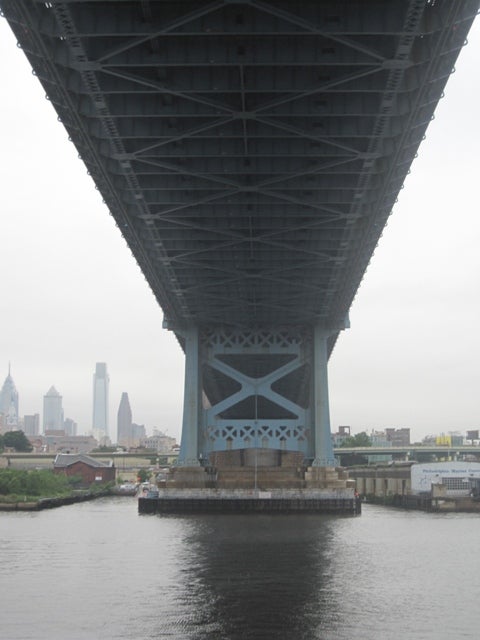
June 19
By Henry Steinberg
For PlanPhilly
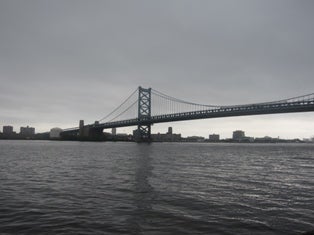
I began the evening on the pier next to Dave & Busters. It was dreary, wet – an overall dismal start for a night on the Delaware River sponsored by the PennDesign Alumni Association and hosted by my dad, Penn Praxis Director Harris Steinberg.
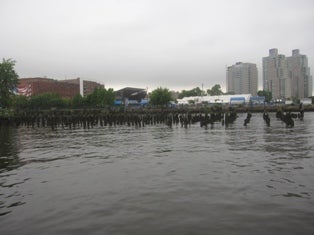
The stately Ben Franklin Bridge loomed against an imposing gray sky. I hopped on the boat for the two-hour tour, and before long shoved off for (relatively) open water with 100 or so fellow travelers.
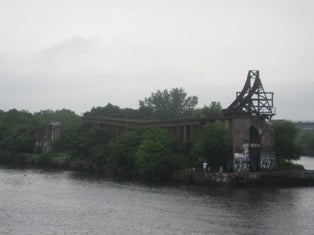
We started our Central Delaware journey heading north toward the Betsy Ross Bridge. What we left behind now looked foreign, a different Philadelphia, as seen from the water, a far wilder city, more fluid, shockingly green, an alien landscape.
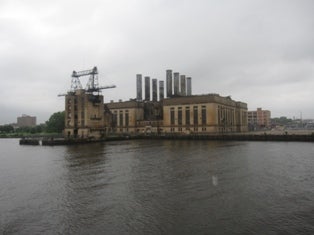
We traveled past the abandoned ore piers and the imposing Windrim-built Delaware Power Station, before passing Petty’s Island. I marveled at these ruins and like so many others on the Captain Lucky was unaware of their existence until that moment.
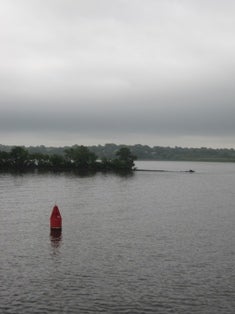
When we finally reached the northern most terminus of our voyage, my dad began talking about these riparian monuments in a way that made them come alive.
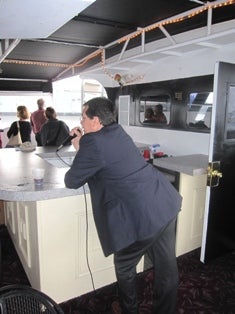
Harris Steinberg
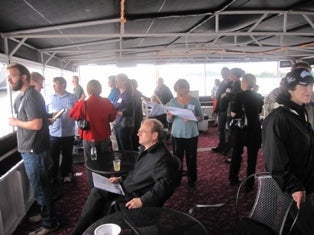
Heading south toward the Navy Yard, we passed the endangered Cramps Building, the untamed (and unintentional) beauty of the Conrail piers and Penn Treaty Park. These sites sit in neighborly accord with a huge gash of land that is the site of the future SugarHouse Casino.
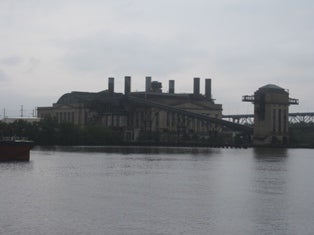
Richmond Power Station
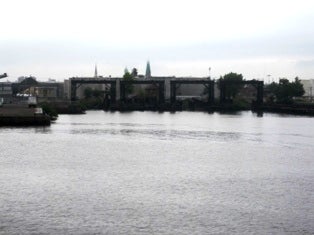
Port Richmond gantries
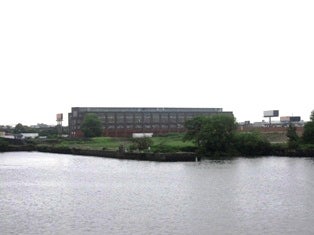
William Cramps Shipyard Building
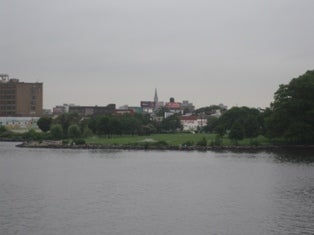
Penn Treaty Park
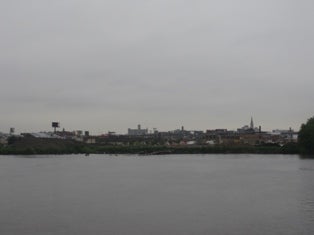
SugarHouse site
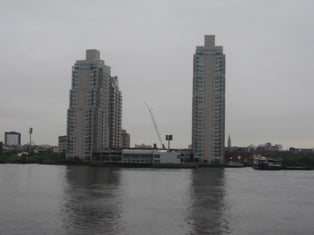
We moved on, further down the river, shooting past our point of entry and out underneath the Ben Franklin Bridge. And what a bridge it is. To see it from the water only adds to the significance and heft of the structure. As my dad said, it truly is one of the unsung treasures of Philadelphia.
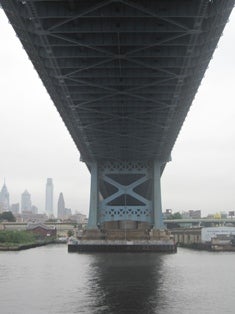
Next to the bridge, and dwarfed by it, was Pier 11 and Pier 9, the future site of a city sponsored public space.

Piers
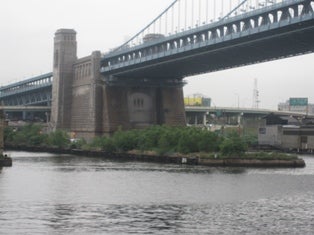
Pier 11
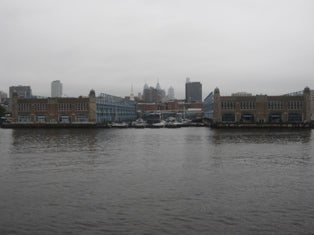
More piers
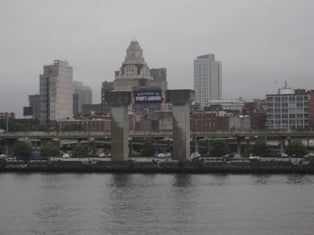
Then moving farther down the river we passed Penn’s Landing and Philadelphia’s testament to “Stonehenge,” a large concrete abutment that was to serve as the Camden-to-Philly tram base.
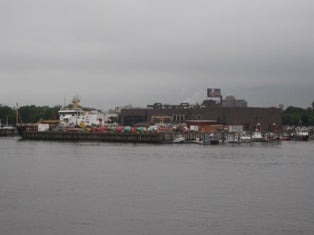
As we moved on to the Coast Guard station, interestingly, at least to me, were the dilapidated remains of piers claimed by the river, which an ecologist standing next to me said are a boon for forming aquatic habitats for fish.
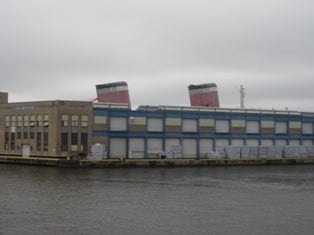
We moved father south, past the big box retailers, and came upon “a great little attic item” according to the elder Steinberg. He was referring to the S.S. United States, a giant among ocean going liners that has been left to go to seed in South Philadelphia. From the water, it is a majestic sight, and I couldn’t help but be saddened by the idea that this once mighty vessel would probably never cruise again.
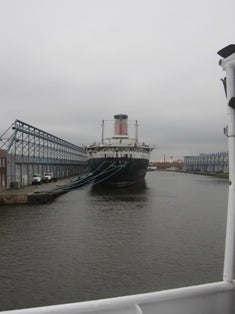
____________________________________
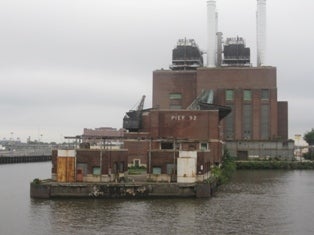
We moved on to Oregon Avenue, and Pier 98, which is owned and operated by Homeland Security folks (sorry I can’t tell you more).
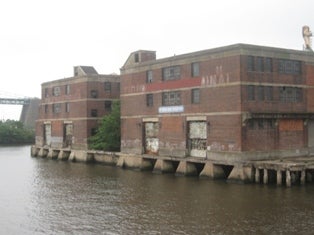
_______________________________________________
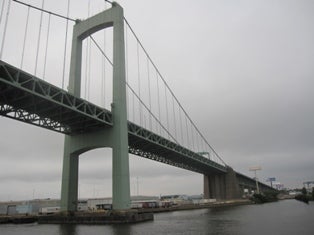
At Pier 98, the formal tour (the audio part) came to an end, and yet, we motored on, down to the Navy Yard. The rest of the voyage was calm and slow, allowing everyone to drink in the surroundings at their own pace
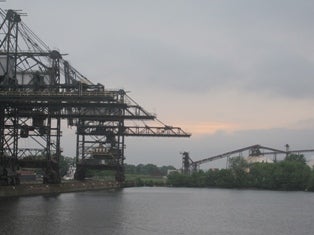
When we got to the Navy Yard, a crack of yellowish red color appeared in the sky, and a glimmer of sunset flitted about the water. The giant ships there added a certain solid feel to the water, bleeding across the edge between the river and land. Dotted along the river banks stood huge cranes and other mechanical contraptions that despite being thoroughly inorganic did not seem out of place.
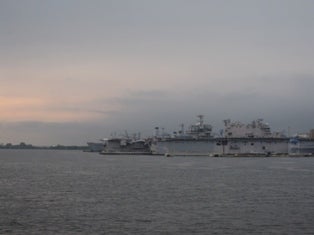
When we returned to the dock, it was overcast and raining again but it wasn’t the dampness that stood out in my mind, it was the beauty of the river, of something I, a native Philadelphian, had at my fingertips but never truly experienced. I walk away amazed and encouraged by the possibilities. And I’ll be back.
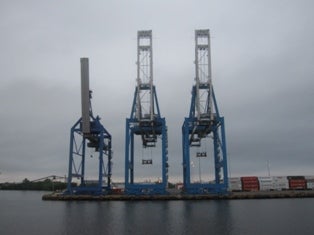
Cranes
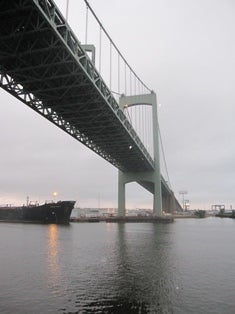
Walt Whitman Bridge
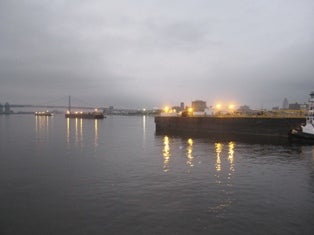
Dusk!
Contact the reporter at henst@sas.upenn.edu
WHYY is your source for fact-based, in-depth journalism and information. As a nonprofit organization, we rely on financial support from readers like you. Please give today.



